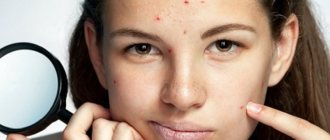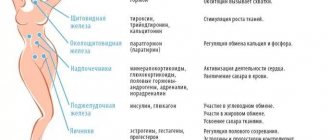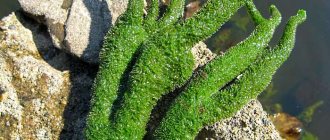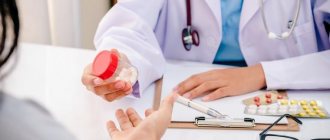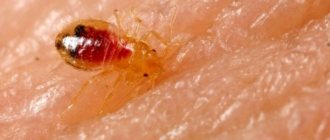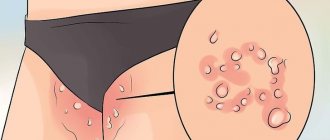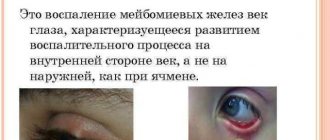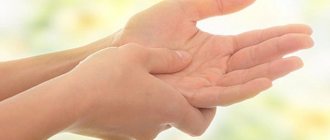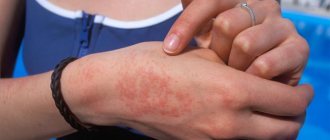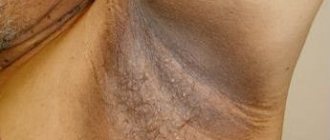Causes
In order to stop the development of pathology and begin treatment, it is necessary to determine the cause that led to the development of such disorders in the condition of the skin in the armpits. Most often, the problem is a violation of hygiene requirements, as a result of which harmful bacteria actively multiply on the skin of the armpits.
In some cases, underarm irritation is a symptom of a more serious health problem. This could be a decrease in immunity, diabetes, or a sign of endocrine pathologies. In women, such conditions usually occur during periods of hormonal changes, and in men - during active sports.
Hygienic reasons
The most common cause of skin irritation in the armpit area is poor personal hygiene. When sweating occurs, the skin of the armpits, remaining constantly moist, suffers from a lack of oxygen, which affects the condition of the epidermis.
To prevent this from happening, you need to follow a few simple rules:
- It is important to avoid wearing clothes and underwear made of synthetic materials, since a lack of oxygen will sooner or later lead to redness of the skin, the appearance of rashes with itching and pain.
- Avoid the misuse of deodorants and antiperspirants, which can clog the glands that produce sweat. Finding no way out, sweat accumulates under the skin and causes inflammation. Firstly, you don’t need to apply deodorant immediately to wet skin after washing. And secondly, many deodorants contain substances that are not entirely beneficial for the skin, which can cause an allergic reaction.
- Do not use low-quality washing powders for washing clothes and bedding. Undissolved grains can remain in the fibers of the fabric, and upon contact with the skin, cause redness with itching and irritation.
- It is important to be careful when shaving hair in the armpit area, as the razor can leave microtrauma on the skin, which serves as favorable conditions for the existence of bacteria.
Sensitive skin is more prone to irritation and can react to the slightest conditions of discomfort. Overheating, tight clothing, careless injury to the skin, all these conditions are threatening and can lead to irritation.
After shaving
When planning to shave hair in the armpit area, you must act very carefully and be sure to prepare for this procedure. First of all, it is better to treat the razor that will be used with a disinfectant solution, and the skin should be washed well with hot water and soap. After shaving, the treated area of skin is wiped with an antiseptic.
However, often even after following all the recommendations, itching and redness occur on the skin. Vaseline, Hydrocortisone ointment or Levomycetin in the form of a solution will help eliminate them. You can try to eliminate irritation with a decoction of chamomile, calendula, sage, and lemon juice.
After deodorant
If skin irritation in the armpits occurs as a result of a reaction to the use of a deodorant, then they no longer use it, but try to purchase some kind of hypoallergenic anti-sweat product. Also, you need to try to reduce the severity of inflammation by using for this purpose a decoction of chamomile, sea salt, as well as zinc ointment, medicinal cream with extracts of aloe, rosemary, sea buckthorn oil, and propolis.
How to treat mycosis in the armpit
When a doctor diagnoses armpit fungus, treatment will include medications to reduce sweating. If you do not take care of this problem, antimycotic ointments will not be effective and will be washed off later.
Before treating a patient, the doctor determines the presence of infections. If the fungus affects large areas of the skin, a secondary infection develops. The treatment course will include systemic antibiotics and antifungal drugs; creams, solutions and lotions should be used.
You should not choose antibacterial agents, as well as drugs against fungi; let a competent specialist do this. The liberal use of drugs such as terbinafine, fluconazole, itraconazole can harm health, and the fungus will develop resistance to the drug.
In addition to complex medications, the doctor recommended treatment with folk remedies; immunity-stimulating drugs are prescribed - anaferon, cycloferon, halovit, polyoxidonium, bifon.
There is no need to use the products for a long time - it is harmful. May block the immune system. From a large selection of local antimycotic agents, mycozoral, nizoral, terbinox, myconorm, imacort, triderm and terbizil are prescribed.
To effectively treat a disease such as armpit fungus, the ointments should be used according to the instructions recommended by the doctor. To reduce the amount of sweat, medicinal antiperspirants and traditional medicine are used - vinegar, sage tincture and lemon balm tea.
If areas of the skin are affected by the fungus, the doctor may prescribe physical therapy as a treatment procedure. Irradiation of disease foci using an ultraviolet lamp. If the outcome is successful, mycosis can be cured after 5 procedures.
In the early stages of fungal diseases, it is possible to cure the infection with external medications without using toxic systemic agents. This scheme will be gentle on organs and systems. Local ointments and creams do not penetrate the bloodstream and create a concentration at the site of the disease in order to get rid of pathogenic microflora.
Diseases whose symptom is itching
Unfortunately, irritation of the skin in the armpits may not occur due to poor hygiene; often this skin condition is a manifestation of serious pathologies, which most often are:
- The appearance of signs of candidiasis, when the skin in the armpit area becomes inflamed, itchy, and in the absence of timely treatment, the lesion quickly spreads to healthy tissue;
- The development of psoriasis, when scaly lumps appear in the armpits, accompanied by itching;
- Disturbances in the endocrine system with the development of diabetes;
- The formation of hidradenitis, a characteristic sign of which is a very itchy lump with a bluish tint;
- The appearance of boils;
- Contact or seborrheic type of dermatitis;
- Autointoxication of the body.
Any of these conditions can manifest as skin lesions primarily in the armpit area. The manifestations of each disease may differ in appearance, but they are all accompanied by varying degrees of skin inflammation.
Symptoms of candidiasis under the arms
Fungus under the arms is often similar in its symptoms to other dermatological pathologies: pityriasis rosea, skin dermatitis, neurodermatitis, herpes. With improper therapy or its absence, candidiasis becomes chronic and spreads to nearby skin. Thrush under the arms can be identified by the following symptoms:
- constant itching, which increases over time and the person feels a burning sensation;
- spots on the skin containing blood fluid;
- redness and peeling of damaged skin areas;
- wet wounds in the itchy area;
- loss and lack of hair at the site of damage.
What it looks like, photo
Depending on the cause of its occurrence, skin irritation may be accompanied by various features. Irritated skin may cause a rash that is white or reddish, the skin may look shiny or pimply, be lumpy, have an odor, ooze pus, be sensitive, and be painful.
In some cases, the skin of the armpits may appear swollen, and the general condition may worsen with sweating, runny nose, headache and sore throat, fever with chills, and even accompanied by joint pain and bone tenderness.
If your health rapidly deteriorates, a rash appears, problems with breathing appear, the face, tongue or lips swell, as well as other serious changes in the condition of the body, then you should immediately seek help from a doctor.
Prevention
In order not to experience all the discomfort from the symptoms of mycosis of the armpits, hygiene of the armpits is not enough. It is necessary to adhere to certain preventive measures:
- monitor nutrition and weight;
- replace synthetic clothing with natural ones;
- carefully study the composition of the cosmetics used (perspirants, deodorants);
- Disinfect the razor, scissors, and epilator with Chlorhexidine solution before each use.
When people have itchy and flaky skin under their arms, few understand what causes this and what to do to normalize the situation. We decided to understand the causes of the violation and ways to combat it.
Symptoms and signs
The appearance of irritation in the armpit area cannot be confused with another pathology, since it exhibits a number of characteristic symptoms, depending on the factor causing them. So:
- With the development of mycoses or candidiasis, irritation is accompanied by a powdery coating with rashes on it of the same pale color;
- With dermatitis, the skin becomes covered with scales, patients feel severe itching;
- The irritation of hyperhidrosis is characterized by severe swelling, redness and burning;
- When reacting to the application of deodorant, redness of the skin is accompanied by a strong burning sensation.
There may be other signs of irritation, often increased sweating begins, and the smell of sweat becomes unusual and unpleasant. Often, the use of even the most persistent deodorants does not prevent the obsessive odor, and frequent washing with antiseptics or soap and water eliminates the odor only for a short time.
What diseases can it cause?
Sometimes signs of irritation under the arms actually warn of the development of various health problems that require closer attention and targeted treatment. In particular, redness and rash may appear when:
- Excessive sweating (hyperhidrosis).
- Prickly heat.
- Allergic reactions.
- Dermatitis.
- Pyoderma.
- Fungal diseases.
- Psoriasis.
Only an experienced dermatologist can identify the exact cause of unpleasant symptoms and correct them. If you suspect any health problems, it is better not to self-medicate, but to seek medical help.
Itchy armpits due to hyperhidrosis
Local hyperhidrosis of the armpits is a very common problem, which, however, most doctors consider not as a disease, but as an individual characteristic of a person. But sometimes sweating is a consequence of various health problems, for example, hormonal disorders, endocrine diseases, various tumors, etc. Such causes must be timely identified and adequately treated.
Irritation under the arms after shaving, what to do
When removing hair in the armpit area with a razor, sensitive skin often becomes irritated, and to prevent this or get rid of inflammation, you can use decoctions of medicinal plants. Most often it is recommended to use a decoction of chamomile and mint, one spoon of which is poured into 0.5 liters of boiling water and infused in a thermos. Lotions are made from the prepared broth. When shaving, it is better to use special razors with several blades, as they cause less damage to the skin. It is not recommended to apply deodorant immediately after completing the procedure, and you should also try to use skin moisturizers. Treatment at home
When treating irritation in the axillary area, the methods used largely depend on the cause of its occurrence. If pathological changes in the skin are caused by a deodorant or antiperspirant, then you must stop using these products. Methods of carrying out hygiene procedures can also affect the condition of the skin in this area; for sensitive and irritated skin, it is better to use special gels or mild soaps. In the case of a complicated form of dermatitis, the affected areas are treated with alcohol solutions of salicylic or boric acid.
- Often, for lesions of this kind, the doctor prescribes combined local preparations containing hormones in the form of Lorinden, Sinoflan, Pimafucort.
- To eliminate anxiety and the effects of stress, Novo-Passit, Sedavit or Fitosed are prescribed.
- To get rid of itching, take antihistamines such as Zodak, Suprastin or Cetrin.
- To eliminate the symptoms of fungal infection, Lamisil, Mikoseptin, Lamikon are used.
- To get rid of skin inflammation, products containing zinc oxide are applied to the affected tissues, namely Diaderm, Desyatin, Tsindol and zinc ointment.
For complicated forms of irritation that could not be removed in a timely manner by the measures taken, antibiotics are taken and a diet low in carbohydrates and vitamins are prescribed.
Diagnostics
An experienced doctor will make an accurate diagnosis only after conducting tests. A special Wood's lamp can detect inflammation and fungal rashes in the armpits. The doctor shines a light on the affected areas, determining the type of pathology by the color of the plaques. Why itches in this area can be found out using an additional analysis - the Balzar test. The area of inflammation is lubricated with aniline dyes and a 2% iodine solution. If the skin is affected by lichen, the dye will be absorbed, turning the lesions a rich color. Additionally, other laboratory activities may be prescribed:
- checking blood sugar;
- urine analysis for the presence of inflammatory processes;
- analysis of armpit scrapings for the type of pathogen.
Treatment of irritation under the arms in children
Children also have skin problems such as diaper rash and irritation. This may be a reaction to food products or insufficient hygienic care. To eliminate such symptoms, it is necessary to identify the cause of their occurrence and then begin treatment. If the issue is a reaction to foods, then it is important to exclude them from the diet, and treat the damage with herbal infusions of oak bark, sage, chamomile, and string. The cause of skin irritation in babies can be warm, tight clothing that does not allow air to pass through well. Therefore, such children should take air baths as long as possible. Skin folds should be lubricated with baby protective milk or cream.
If all the measures taken do not relieve the irritation, then it is better to seek help from a pediatrician. In case of severe diaper rash under the arms, children are prescribed the use of a special product with zinc oxide in the form of a mash, which is prepared in a pharmacy according to a doctor’s prescription.
What to do if you are irritated?
The appearance of redness and discomfort in the armpits is a reason to listen more closely to your own body. For such symptoms, it is recommended:
- Reconsider your attitude towards armpit care.
- Change your usual lifestyle a little.
- Seek medical help.
- Use local and/or systemic medications that suppress unpleasant symptoms.
- Use traditional medicine (preferably after doctor’s approval).
Features of treatment
Features of the treatment of skin irritation in the armpit area lie in the specifics of the therapy performed. That is, treatment depends on the factor that caused this change in the skin. Thus, skin lesions often resolve on their own after removal of the underlying disease or change in external conditions. If the cause is serious illness, you should consult a doctor as soon as possible. This will not only relieve skin irritation, but also improve the condition of the entire body. In some cases, for example, with fungal infections, it is not enough to use only local remedies, so the patient will be forced to take internal antibacterial drugs in the form of Nystatin.
Patients with complicated forms of dermatitis are prescribed hormonal external agents, the use of which requires medical supervision and control.
If the problem is caused by diabetes, then conventional therapeutic methods will be ineffective. It is necessary to obtain recommendations from an endocrinologist who will select treatment methods appropriate to the patient’s condition.
Only specialists can prescribe the correct treatment based on the examination and examination. Self-medication in such cases is unacceptable, since the cause of irritation in the armpits can be very different, from simple allergies to serious pathologies.
Fungus symptoms
Before choosing a remedy that will help get rid of fungus, you need to make sure that the discomfort is caused by a fungal infection. A doctor will help identify the problem.
The patient suspects a fungus in the armpits if diaper rash is visible, itchy and covered with cracks, peeling of the skin with the appearance of a powdery white coating.
The doctor must differentiate mycosis from neurodermatitis, lichen, dermatitis, and then prescribe effective treatment for the fungus under the arms. A dermatologist is involved in diagnosis and treatment. He will send a skin scraping for laboratory analysis to identify the pathogen and its sensitivity to drugs.
Folk remedies and recipes
As folk methods for treating skin irritation, decoctions of medicinal plants can be quite effective. St. John's wort, oak, sage, chamomile, calendula, mint and oregano are commonly used in this capacity. Using procedures in the form of lotions or rubbing with decoctions, you can remove redness of the skin and avoid irritation. To prepare decoctions, one tablespoon of any herb or mixture thereof is brewed with boiling water in a glass and left for at least half an hour. This is a fairly simple and at the same time effective treatment method that will help maintain healthy skin.
Preventive recommendations
Following certain rules will avoid irritation on the skin of the armpits and relieve the feeling of discomfort. To do this you should:
- Prefer to wear loose-fitting clothes made from natural fabrics;
- Wash the skin of your armpits with water at least once a day;
- When shaving in this area, it is important to properly prepare the skin and carry out the procedure using special gels;
- After shaving, treat the skin against possible penetration of bacteria.
If your skin is sensitive to many components in washing powders or shower gels, you need to choose those that do not cause an allergic reaction. If internal changes are the cause of irritation, you must immediately consult a doctor and eliminate the provoking factors.
Treatment of armpit fungus
Fungal diseases of the armpits are different forms of lichen, seborrhea, psoriasis. Laboratory results will help determine the optimal course of treatment for each individual patient. Therapy includes several components: adjustments to diet and lifestyle, taking medications orally and using local medications, and physiotherapy. The use of traditional methods provides great assistance in complex treatment.
- How to cook flounder in the oven
- Which is the best printer-scanner-copier for the home?
- Duphalac - instructions for use for adults and children
Medications
Fungal infection at an early stage can be successfully treated with external agents. Antifungal creams, ointments and gels are applied to cleansed skin of the armpit several times a day. If bacteria join the mycosis, the doctor prescribes antifungal drugs and antibiotics. This can be complex therapy of systemic and external effects.
In addition to gels, ointments and creams, medical antiperspirants containing aluminum and zinc salts can be used to treat fungus. These substances block the release of sweat to the surface of the epidermis. In complex therapy of fungus, injections of Dysport and Botox are used. The action of these drugs blocks the nerve impulse through which the message from the autonomic center goes to the sweat gland.
Systemic treatment of mycosis
In advanced cases, to suppress active mycelium, experts prescribe fungicidal agents in tablets, capsules or ampoules, which are used orally. Among them:
- Fluconazole. An antifungal drug with high specificity for fungal enzymes. Destroys mycelium, spores, strengthens local immunity, eliminates internal and external symptoms of the disease. The daily dose ranges from 50-400 mg. The duration of use is indicated by the doctor individually. If taken incorrectly, side effects may develop on the nervous, digestive, and cardiovascular systems.
- Itraconazole An antifungal agent with a wide spectrum of action. Penetrates the cells of the fungus, breaks its shell from the inside, which leads to the destruction of the microorganism. It acts cumulatively, so significant results of therapy are noticeable 4 weeks after the start of treatment. The dose for an adult is 200 mg 1-2 times/day. An overdose may cause abdominal pain, migraine, swelling, and skin rash.
Ointments
For minor damage and irritation of the skin, local treatment of axillary fungus is used. In order not to trigger the disease at the first detection of discomfort, the following drugs are prescribed:
- Terbinafine. An antifungal agent that acts against almost all types of fungi. It affects the membranes of fungal cells, which subsequently causes the death of the pathogen. Apply a thin layer of ointment to cleansed armpit skin 2 times a day, morning and evening. After application, it is recommended to cover the affected area with a napkin so that the drug does not rub off on clothing. The average course of treatment is 7-14 days. Contraindications for use include renal/liver failure, chronic alcoholism, and malignant tumors.
- Clotrimazole. Antifungal ointment that quickly helps to cope with fungus, excessive sweating, and pigmentation. Apply the drug 3-4 times a day in a small dose to clean, dry skin of the armpits. It is necessary to gently rub the ointment, but do not cover it with bandages. The course of treatment is at least 1 month. Do not use the ointment during the first trimester of pregnancy or if you are hypersensitive to its components.
Special creams
Special creams will help cope with the fungus in the axillary affected area. They differ from antifungal ointments only in their lighter consistency. Creams are quickly absorbed and do not leave marks on clothes. Best in their group:
- Batrafen. Used for local treatment of fungal infections. It has a fungicidal effect on dermatophytes and other types of fungi. For mycosis of the armpits, apply 2 times a day for at least 14 days. Method of application: first wash the armpits with soap, wipe the skin dry, and then apply a thin layer of cream, gently rubbing into the skin. The drug should not be used if the situation does not improve after 4 weeks of use.
- Biphospor. Antifungal medicine has a wide spectrum of action. It has an effect when the pathogen is resistant to other medications. The cream is applied to the affected area 1-2 times/day. The duration of therapy is from 2 to 5 weeks. The cream should not be used in the first trimester of pregnancy, during lactation, or if hypersensitivity to its components has occurred.
Physiotherapy
There is another method of combating yeast microorganisms, in which their destruction occurs without the use of medications. If the first symptoms of armpit mycosis appear, the doctor may refer the patient to physiotherapy, including:
- Laser treatment. It consists of getting rid of excessive sweating and, as a result, from the further development of a fungal infection. Symptoms of the disease go away due to the impact of a microimpulse on the skin, which cauterizes the sweat glands.
- Ultraviolet. The use of a short spectrum, which occurs when ultraviolet waves are generated by special devices, allows you to permanently overcome the infection. The procedure does not cause discomfort, and relief from mycosis of the armpits occurs after the first session, which lasts 15 minutes.
Treatment with folk remedies
You can get rid of excessive sweating of the armpits with the help of traditional medicine. Although admirers of natural treatment suggest doing without pharmaceutical drugs, it is better to discuss any therapy with your doctor, since natural ingredients also have their side effects and contraindications. The following recipes are suitable for the treatment of mycoses of the armpits:
- Buckwheat and calendula flowers. First, boil 50 g of cereal in 300 ml of water. Then the liquid is drained and 20 drops of alcohol tincture of calendula flowers are added to the porridge. The mixture is used for daily rubbing of the armpits.
- Propolis tincture. Crushed propolis should be poured with alcohol in a ratio of 1:4. Leave for 2 weeks in a sealed container, shaking every day. Then filter and treat the armpits with the tincture several times daily until the condition improves.
